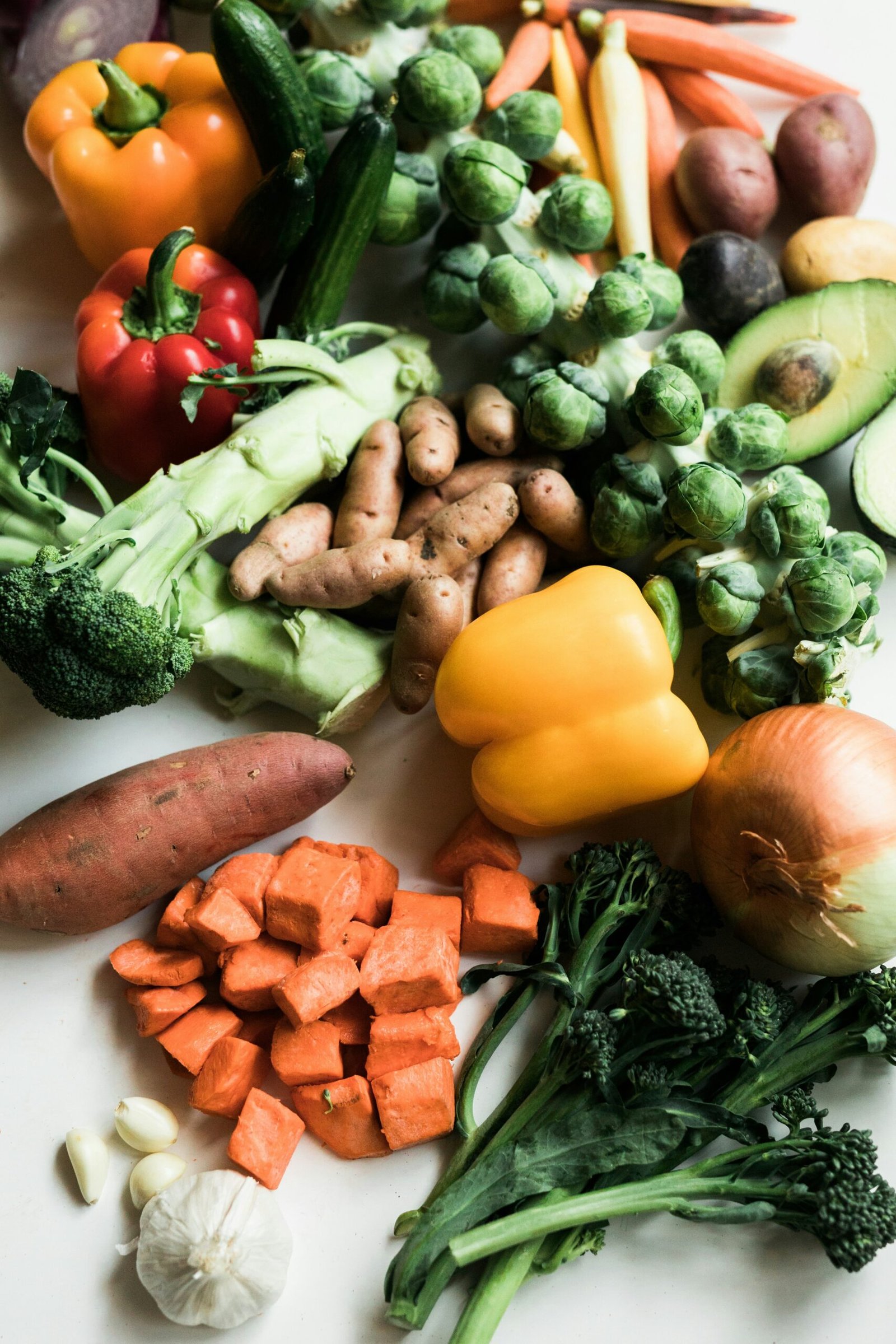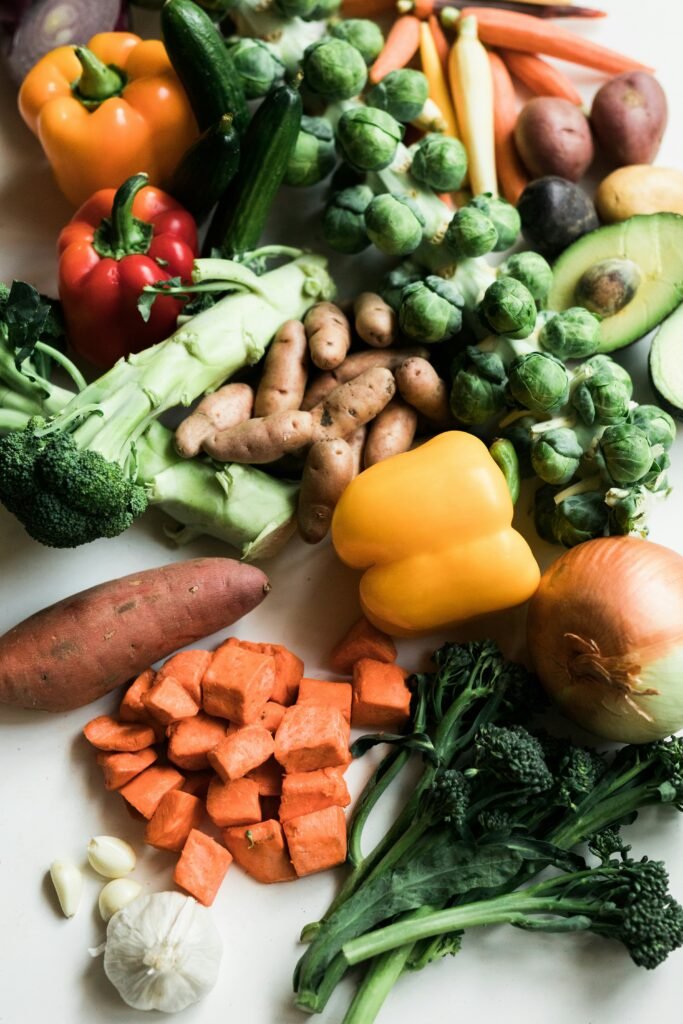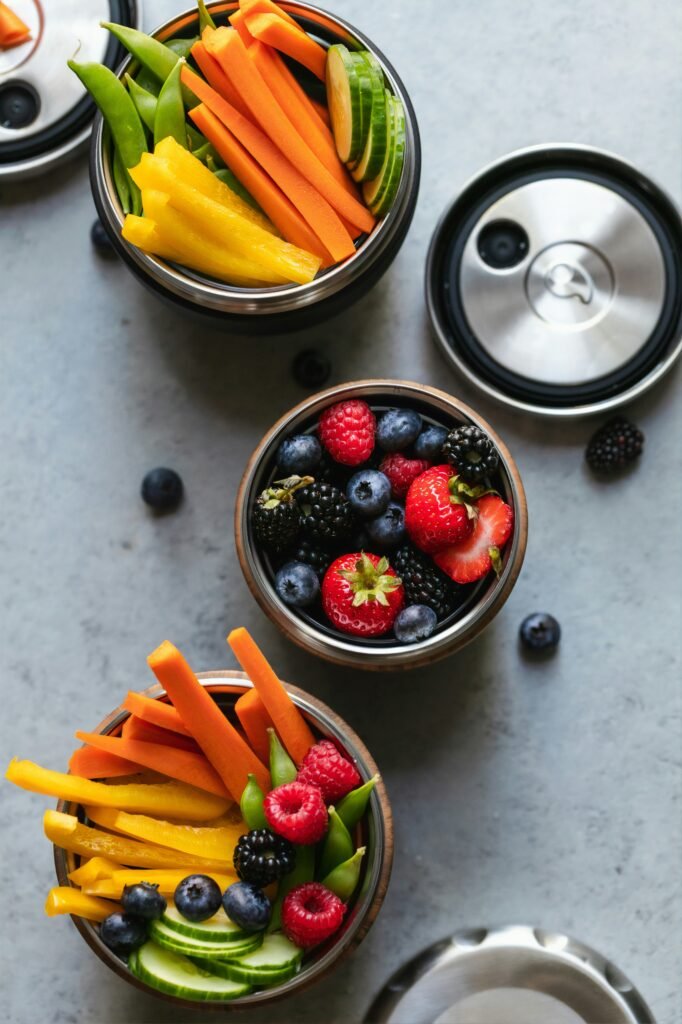
Looking to start a low-carb diet but worried about sacrificing taste and flavor? Look no further! In this article, you will discover a treasure trove of delicious low-carb diet tips and recipes that are sure to satisfy your taste buds while keeping your carb intake in check. From scrumptious breakfast options to mouthwatering dinner ideas, we’ve got you covered. Say goodbye to bland and boring meals and say hello to a new world of culinary delights that support your low-carb lifestyle. Are you ready to embark on a mouthwatering journey of flavor? Let’s get started!

This image is property of images.unsplash.com.
Find more product like these on Amazon!
Benefits of a Low-Carb Diet
Weight loss
One of the biggest benefits of following a low-carb diet is weight loss. When you reduce your carbohydrate intake, your body is forced to burn fat for energy instead of relying on carbohydrates. This can lead to significant weight loss over time. By limiting the consumption of high-carb and sugary foods, you can create a calorie deficit and shed those unwanted pounds.
Stabilized blood sugar levels
Another advantage of a low-carb diet is that it helps stabilize blood sugar levels. When you consume foods high in carbohydrates, your blood sugar levels can spike, leading to a surge in insulin production. This can result in an energy crash and cravings for more carb-rich foods. By reducing your carbohydrate intake, you can prevent these spikes and crashes, keeping your blood sugar levels more consistent throughout the day.
Reduced cravings
One of the hurdles many individuals face when trying to eat a healthier diet is dealing with cravings for sugary and carb-heavy foods. The good news is that following a low-carb diet can help reduce those cravings. When you consume carbohydrates, especially refined sugars, your blood sugar levels spike and drop rapidly, triggering cravings for more of these foods. By limiting your carb intake, you can break free from these cravings and adopt healthier eating habits.
Increased energy levels
Many people report feeling more energized when they switch to a low-carb diet. This is because when your body is primarily fueled by carbohydrates, your energy levels can experience significant fluctuations throughout the day. By reducing carb intake and relying on fat for energy, you can achieve a more stable and sustained energy level. Additionally, low-carb diets often involve consuming more protein and healthy fats, both of which can provide a long-lasting source of energy.
Tips for a Successful Low-Carb Diet
Gradually reduce carbohydrate intake
When starting a low-carb diet, it’s important to make changes gradually. Sudden drastic reductions in carbohydrate intake can lead to unpleasant symptoms commonly referred to as the “keto flu.” Instead, gradually decrease your intake of high-carb foods over time, allowing your body to adjust to this new way of eating.
Focus on whole foods
To get the most out of your low-carb diet, focus on consuming whole foods. Choose lean proteins, vegetables, fruits in moderation, and healthy fats. These foods are packed with nutrients and will provide you with the fuel your body needs while keeping carb intake low.
Increase protein and healthy fat consumption
Protein and healthy fats are crucial components of a successful low-carb diet. Not only do they help keep you fuller for longer, but they also provide important nutrients for your body. Include sources of protein like lean meats, poultry, fish, and plant-based proteins like tofu or tempeh. Healthy fats can be found in avocados, nuts, seeds, and oils like olive oil or coconut oil.
Stay hydrated
Proper hydration is always essential, but it’s even more crucial when following a low-carb diet. Drinking water helps with digestion, keeps you feeling satiated, and aids in flushing out toxins. Aim to drink at least 8 glasses of water per day, and more if you are physically active.
Plan meals and snacks in advance
To stay on track with your low-carb diet, it’s helpful to plan your meals and snacks in advance. This way, you won’t be tempted to reach for high-carb, convenient options when hunger strikes. Spend some time each week planning your meals, creating a shopping list, and prepping ingredients in advance.
Low-Carb Recipe Ideas
Cauliflower Fried Rice
Cauliflower fried rice is a delicious low-carb alternative to traditional fried rice. Simply pulse cauliflower florets in a food processor until they resemble rice grains. Sauté the cauliflower rice with vegetables, protein, and seasonings of your choice for a flavorful and satisfying meal.
Zucchini Noodles with Pesto
Swap out traditional pasta noodles for zucchini noodles, also known as zoodles, for a low-carb pasta alternative. Spiralize fresh zucchini and toss it with homemade or store-bought pesto sauce for a light and refreshing meal. You can also add some grilled chicken or shrimp for added protein.
Broccoli and Cheese Stuffed Chicken Breast
This low-carb recipe combines the goodness of chicken breast with the flavors of broccoli and cheese. Stuff a chicken breast with cooked and seasoned broccoli florets, along with your favorite shredded cheese. Bake until the chicken is cooked through and the cheese is melted and gooey.
Kale and Avocado Salad with Grilled Salmon
For a nutrient-packed and low-carb salad, combine fresh kale, ripe avocado, cherry tomatoes, and grilled salmon. Drizzle with a lemon vinaigrette for a refreshing and satisfying meal that’s packed with healthy fats and protein.
Spaghetti Squash Bolognese
Spaghetti squash makes an excellent low-carb substitute for traditional spaghetti noodles. Cut the squash in half, remove the seeds, and roast it in the oven until the flesh can be easily shredded with a fork. Top the spaghetti squash “noodles” with a homemade Bolognese sauce made with lean ground meat, tomatoes, and your favorite seasonings.
Lettuce Wrapped Turkey Burger
Swap out the bun for lettuce leaves and enjoy a delicious low-carb turkey burger. Grill or pan-fry a lean turkey patty, wrap it with crisp lettuce leaves, and top it with your favorite burger fixings like tomatoes, onions, pickles, and a dollop of low-carb mayo or mustard.
Low-Carb Snack Ideas
Celery sticks with almond butter
Celery sticks paired with almond butter make for a satisfying and low-carb snack option. The natural crunch of celery combined with the creamy nut butter provides a great balance of flavors and textures. This snack is packed with fiber, healthy fats, and essential nutrients.
Hard-boiled eggs
Hard-boiled eggs are a convenient and protein-rich snack that can keep you feeling satiated between meals. They are portable and versatile, making them a great option for busy days or when you’re on the go.
Cheese and cucumber slices
Enjoy the combination of crunchy cucumber slices and creamy cheese for a low-carb snack. Opt for a low-fat cheese variety and enjoy the contrast of flavors and textures. This snack is perfect for satisfying your savory cravings while keeping your carb intake in check.
Turkey or chicken roll-ups
Roll up lean deli turkey or chicken slices with your favorite low-carb condiments like mustard or hummus. Add some lettuce leaves or sliced vegetables for added freshness. These roll-ups are easy to prepare in advance and make a great grab-and-go snack option.
Nuts and seeds
Nuts and seeds are packed with healthy fats, protein, and fiber, making them an excellent choice for a low-carb snack. Almonds, walnuts, chia seeds, and pumpkin seeds are all great options. Just be mindful of portion sizes as they are calorie-dense.
Greek yogurt with berries
Greek yogurt is high in protein and low in carbs, making it an ideal snack for a low-carb diet. Pair it with fresh berries like strawberries, blueberries, or raspberries for added sweetness and nutrients.

This image is property of images.unsplash.com.
Low-Carb Substitutes for High-Carb Ingredients
Cauliflower rice instead of white rice
Cauliflower rice is a versatile and low-carb alternative to traditional white rice. Simply pulse cauliflower florets in a food processor until they resemble rice grains and cook as desired. It can be used in stir-fries, fried rice, or as a base for grain bowls.
Zucchini or eggplant slices instead of pasta
Replace high-carb pasta with thin slices of zucchini or eggplant for a low-carb and gluten-free alternative. They can be used in lasagna, baked pasta dishes, or served with your favorite sauce.
Lettuce wraps instead of tortillas
When you’re craving a wrap or taco, opt for lettuce leaves instead of high-carb tortillas. Lettuce wraps are refreshing, light, and add an extra crunch to your favorite fillings. They are a great low-carb option for enjoying your favorite handheld foods.
Portobello mushroom caps instead of burger buns
For a low-carb burger option, use large Portobello mushroom caps as a bun substitute. Grill or roast the mushroom caps until tender and use them to hold your favorite burger patty and toppings. The mushrooms add a rich and earthy flavor without the extra carbs.
Smart Carbohydrate Choices
Leafy greens
Leafy greens like spinach, kale, and Swiss chard are low in carbohydrates and packed with nutrients. They are versatile and can be enjoyed in salads, sautéed as a side dish, or blended into smoothies.
Cruciferous vegetables
Broccoli, cauliflower, Brussels sprouts, and cabbage are all healthy and low-carb options. They provide important vitamins, minerals, and fiber, and can be enjoyed roasted, steamed, or stir-fried.
Berries
Berries like strawberries, blueberries, and raspberries are relatively low in carbs and high in antioxidants. They can be enjoyed on their own, added to yogurt or smoothies, or used as a topping for low-carb desserts.
Quinoa
While higher in carbs compared to leafy greens and cruciferous vegetables, quinoa is a nutritious grain that can be enjoyed in moderation. It is a good source of protein, fiber, and essential minerals.
Chia seeds
Chia seeds are low in carbohydrates and high in fiber, healthy fats, and protein. They can be used as a topping for yogurt, added to smoothies, or used as an egg substitute in baking.
Sweet potatoes in moderation
Sweet potatoes are a starchy vegetable but can be enjoyed in moderation on a low-carb diet. They are a great source of fiber, vitamins, and minerals. Just be mindful of portion sizes to keep your carb intake in check.

This image is property of images.unsplash.com.
Meal Prepping for a Low-Carb Diet
Plan meals for the week
Take some time at the beginning of the week to plan your meals. Look for low-carb recipes that you want to try and make a shopping list accordingly. Having a meal plan will help you stay on track and avoid reaching for high-carb options out of convenience.
Batch cook protein
To save time and make meal prepping easier, consider batch cooking protein for the week. Grill or bake chicken breasts, salmon fillets, or lean beef in bulk, and store them in separate containers in the refrigerator. This way, you’ll always have a source of protein ready to be incorporated into your meals.
Pre-cut and wash vegetables
Prepare your vegetables in advance by washing and cutting them into appropriate sizes. Store them in airtight containers or plastic bags in the refrigerator for easy access. This will make meal preparation quicker and more efficient.
Portion snacks in advance
To prevent overeating and ensure that your snacks align with your low-carb diet, portion them in advance. Use small containers or snack bags to separate snacks like nuts, seeds, or sliced vegetables into single servings. This will make it easier to grab a healthy and portion-controlled snack when hunger strikes.
Use meal prep containers
Invest in a set of meal prep containers with different compartments to keep your meals organized and prevent cross-contamination of flavors. These containers are stackable, reusable, and make it easy to portion out your meals while keeping them fresh.
Low-Carb Baking Tips
Replace flour with almond or coconut flour
Almond flour and coconut flour are both low-carb alternatives to traditional wheat flour. They are higher in healthy fats and protein and contain fewer carbs. When baking, use these flours as a substitute in recipes that call for wheat flour.
Use sugar alternatives like stevia or monk fruit
When baking on a low-carb diet, it’s important to avoid using refined sugars. Instead, opt for natural sugar alternatives like stevia or monk fruit. These sweeteners have minimal impact on blood sugar levels and can be used in place of sugar in recipes.
Incorporate eggs and cream cheese for moisture
Low-carb baked goods can sometimes be dry due to the absence of traditional binding agents like flour. To combat this, incorporate eggs and cream cheese into your recipes. Eggs add moisture and structure, while cream cheese provides richness and a creamy texture.
Experiment with flaxseed meal or psyllium husk as a binding agent
For recipes that require a binding agent, try using flaxseed meal or psyllium husk. These ingredients are naturally low in carbs and can help give your baked goods the desired texture and structure. They are excellent alternatives for individuals following a low-carb diet.
Avoiding Common Low-Carb Diet Mistakes
Not drinking enough water
When following a low-carb diet, it’s important to stay hydrated. Many people underestimate their water intake and don’t drink enough throughout the day. Make it a habit to keep a water bottle with you and aim for at least 8 glasses of water daily. Proper hydration will help support your overall health and promote weight loss.
Ignoring micronutrient needs
While focusing on reducing carbohydrate intake, it’s essential to ensure that you still get all the necessary nutrients. Many low-carb diets can be lacking in certain vitamins and minerals. To avoid any deficiencies, incorporate a variety of nutrient-dense foods into your meals and consider taking a high-quality multivitamin as a supplement.
Overeating low-carb processed foods
While there are plenty of low-carb processed foods available in the market, overeating these products can be counterproductive. Many of these foods may be low in carbs, but they can be high in unhealthy fats, sodium, and artificial ingredients. Instead, focus on incorporating whole foods into your diet and enjoy processed low-carb options in moderation.
Not adjusting portion sizes to individual needs
Portion control is essential for any diet, including a low-carb one. Even if you’re consuming low-carb foods, overeating can still hinder your progress. Pay attention to your body’s hunger and fullness cues and adjust your portion sizes accordingly. It’s important to find the right balance that works best for your individual needs and goals.
Lack of variety in food choices
Eating the same foods repeatedly can become boring and lead to cravings for forbidden high-carb options. To avoid this, make an effort to include a wide variety of low-carb foods in your diet. Experiment with different recipes, flavors, and cooking techniques to keep your meals enjoyable and exciting.
Staying motivated on a Low-Carb Diet
Set achievable goals
Setting realistic and achievable goals is crucial when following a low-carb diet. Whether it’s reaching a certain weight, fitting into a certain clothing size, or improving your overall health, make your goals specific and measurable. Celebrate small victories along the way to stay motivated and maintain your momentum.
Find a support system
Having a support system can make a world of difference when following a low-carb diet. Surround yourself with friends, family, or online communities who share similar goals. They can provide encouragement, accountability, and valuable tips and advice along your journey.
Track progress and celebrate milestones
Keeping track of your progress is essential for staying motivated. Use a journal, a smartphone app, or a fitness tracker to record your meals, exercise, and measurements. Celebrate milestones along the way, whether it’s losing a certain amount of weight or sticking to your low-carb diet for a specific period. Recognizing your achievements will reinforce your commitment and help you stay on track.
Experiment with new recipes and flavors
One of the best ways to stay motivated on a low-carb diet is to experiment with new recipes and flavors. Look for low-carb recipe blogs, cookbooks, or social media accounts dedicated to low-carb cooking. Trying new foods and flavors will keep your meals exciting and prevent boredom.
Focus on the positive benefits of a low-carb diet
Remind yourself of the positive benefits you’re experiencing by following a low-carb diet. Whether it’s weight loss, increased energy levels, improved blood sugar control, or better overall health, focus on how your body and mind are benefiting from this lifestyle change. By keeping these benefits in mind, you’ll stay motivated and committed to your low-carb journey.

